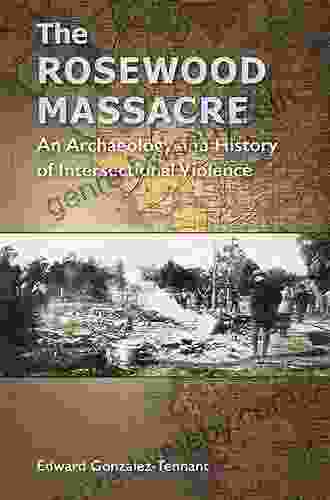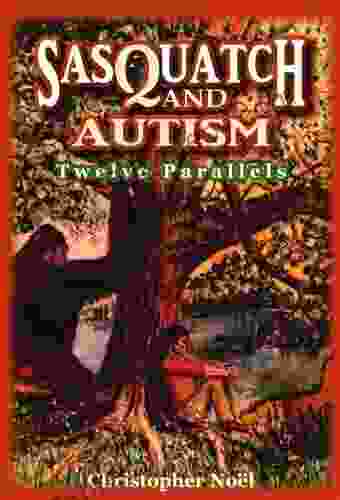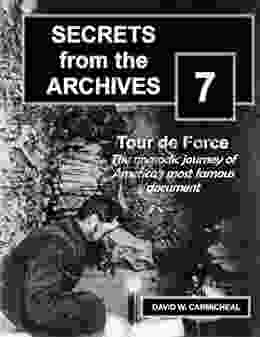Unveiling the Tapestry of Intersectional Violence: An Archaeological and Historical Exploration

Delving into the Intersecting Threads of Oppression
In the realm of social justice, the concept of intersectionality has emerged as a beacon of understanding, illuminating the complex ways in which different identities and experiences intersect to create unique forms of oppression and resilience. "An Archaeology and History of Intersectional Violence," a seminal work in the field, invites readers on an enlightening journey through the hidden histories of these interlocking forms of oppression.
4.7 out of 5
| Language | : | English |
| File size | : | 7451 KB |
| Text-to-Speech | : | Enabled |
| Screen Reader | : | Supported |
| Enhanced typesetting | : | Enabled |
| Word Wise | : | Enabled |
| Print length | : | 242 pages |
Through meticulous archaeological and historical research, this book unearths the subtle and overt ways that intersecting identities have shaped the experiences of marginalized communities. From the trenches of colonialism to the corridors of power, it examines how race, gender, class, sexuality, and other factors have intertwined to create unique vulnerabilities and resiliencies.
Archaeological Excavations Uncover Hidden Histories
Archaeology, with its ability to unearth the material remains of past societies, plays a crucial role in uncovering the hidden dimensions of intersectional violence. By analyzing artifacts, structures, and landscapes, archaeologists can reconstruct the everyday lives and experiences of marginalized communities, shedding light on the ways in which power dynamics and social hierarchies operated.
"An Archaeology and History of Intersectional Violence" draws upon a wealth of archaeological findings to illuminate the experiences of marginalized groups. For example, excavations at plantation sites in the American South reveal the physical and psychological scars of slavery, providing tangible evidence of the dehumanizing conditions endured by enslaved people. Similarly, the analysis of burial grounds sheds light on the ways in which race and gender influenced access to resources and social status.
Historical Narratives Reframe Dominant Perspectives
History, too, serves as an invaluable tool for understanding intersectional violence. By examining written records, oral histories, and other historical sources, scholars can unravel the complex interplay of power, oppression, and resistance over time. "An Archaeology and History of Intersectional Violence" masterfully weaves together historical narratives to reframe dominant perspectives and give voice to marginalized communities.
The book explores the ways in which intersectional violence has been perpetuated and challenged throughout history. It examines the rise of white supremacy and its devastating impact on communities of color, the systemic discrimination faced by women, the criminalization of queer and trans identities, and the struggles of indigenous peoples against colonization. By connecting these historical threads, the book provides a comprehensive understanding of the enduring nature of intersectional violence.
Revealing Resilience amidst Oppression
While "An Archaeology and History of Intersectional Violence" exposes the harsh realities of oppression, it also celebrates the resilience and resistance of marginalized communities. By documenting the ways in which individuals and groups have fought back against injustice, the book offers a beacon of hope and inspiration.
From slave revolts to the civil rights movement, from indigenous resistance to LGBTQ+ activism, the book highlights the power of collective struggle and the transformative potential of solidarity. It demonstrates how marginalized communities have developed creative strategies for survival, resilience, and self-determination, inspiring readers to work towards a more just and equitable society.
Implications for Contemporary Society
The insights gained from "An Archaeology and History of Intersectional Violence" have profound implications for contemporary society. By understanding the historical and archaeological roots of intersectional violence, we can better address its ongoing manifestations in our communities and institutions.
The book calls for a paradigm shift in the way we approach social justice, urging us to move beyond single-issue advocacy and embrace a holistic understanding of the ways in which different forms of oppression intersect. It challenges us to reimagine our social structures, policies, and practices to create a society that truly values equity and inclusion.
A Call to Action
"An Archaeology and History of Intersectional Violence" is not merely an academic treatise; it is a call to action. By illuminating the hidden histories of intersectional violence, the book empowers readers to become agents of change. It invites us to challenge oppressive systems, amplify marginalized voices, and work towards a future where all people are treated with dignity and respect.
For those committed to social justice and human rights, "An Archaeology and History of Intersectional Violence" is an essential resource. Its groundbreaking research, compelling narratives, and powerful insights will inform and inspire your work towards a more just and equitable society.
4.7 out of 5
| Language | : | English |
| File size | : | 7451 KB |
| Text-to-Speech | : | Enabled |
| Screen Reader | : | Supported |
| Enhanced typesetting | : | Enabled |
| Word Wise | : | Enabled |
| Print length | : | 242 pages |
Do you want to contribute by writing guest posts on this blog?
Please contact us and send us a resume of previous articles that you have written.
 Book
Book Novel
Novel Page
Page Chapter
Chapter Text
Text Story
Story Genre
Genre Reader
Reader Library
Library Paperback
Paperback E-book
E-book Magazine
Magazine Newspaper
Newspaper Paragraph
Paragraph Sentence
Sentence Bookmark
Bookmark Shelf
Shelf Glossary
Glossary Bibliography
Bibliography Foreword
Foreword Preface
Preface Synopsis
Synopsis Annotation
Annotation Footnote
Footnote Manuscript
Manuscript Scroll
Scroll Codex
Codex Tome
Tome Bestseller
Bestseller Classics
Classics Library card
Library card Narrative
Narrative Biography
Biography Autobiography
Autobiography Memoir
Memoir Reference
Reference Encyclopedia
Encyclopedia Tetsu Kariya
Tetsu Kariya Will Hart
Will Hart Pradeepa Narayanaswamy
Pradeepa Narayanaswamy Thomas Firbank
Thomas Firbank Julian Hosp
Julian Hosp Monica Eriksson
Monica Eriksson Teresa Amabile
Teresa Amabile Amy Scobee
Amy Scobee Robert Finch
Robert FinchR E S
 Mike Malbrough
Mike Malbrough Rupert Matthews
Rupert Matthews Zhimin Lin
Zhimin Lin Maggie Rowe
Maggie Rowe Myriam Gurba
Myriam Gurba Susannah Meadows
Susannah Meadows Luke Weber
Luke Weber Robert Simonson
Robert Simonson Samuel John
Samuel John Sang H Kim
Sang H Kim
Light bulbAdvertise smarter! Our strategic ad space ensures maximum exposure. Reserve your spot today!

 Brady MitchellAesthetics of the Familiar: Uncovering the Hidden Beauty in Everyday Objects
Brady MitchellAesthetics of the Familiar: Uncovering the Hidden Beauty in Everyday Objects Gene SimmonsFollow ·5.3k
Gene SimmonsFollow ·5.3k Jimmy ButlerFollow ·4.3k
Jimmy ButlerFollow ·4.3k Oscar BellFollow ·7k
Oscar BellFollow ·7k Morris CarterFollow ·5.8k
Morris CarterFollow ·5.8k Ira CoxFollow ·16k
Ira CoxFollow ·16k Geoffrey BlairFollow ·18.3k
Geoffrey BlairFollow ·18.3k Chris ColemanFollow ·10.8k
Chris ColemanFollow ·10.8k Lee SimmonsFollow ·13.3k
Lee SimmonsFollow ·13.3k

 Lee Simmons
Lee SimmonsUnveiling the Enchanting Emerald Isle: A Literary Journey...
A Tapestry of Breathtaking...

 Thomas Hardy
Thomas HardyUnveiling Costa Rica's Enchanting Essence with Lonely...
Embark on an Unforgettable Costa Rican...
 Bryan Gray
Bryan GrayLifting the Veil of Sorrow: A Beacon of Hope for Widowers
Embrace Healing and Find Solace in the...

 John Updike
John UpdikeGrow Your Business and Legacy: An Inspiring Guide for...
Growing Up In The Family Business is an...

 Harrison Blair
Harrison BlairLonely Planet's Western Europe Travel Guide: Your...
Are you planning an unforgettable...
4.7 out of 5
| Language | : | English |
| File size | : | 7451 KB |
| Text-to-Speech | : | Enabled |
| Screen Reader | : | Supported |
| Enhanced typesetting | : | Enabled |
| Word Wise | : | Enabled |
| Print length | : | 242 pages |












